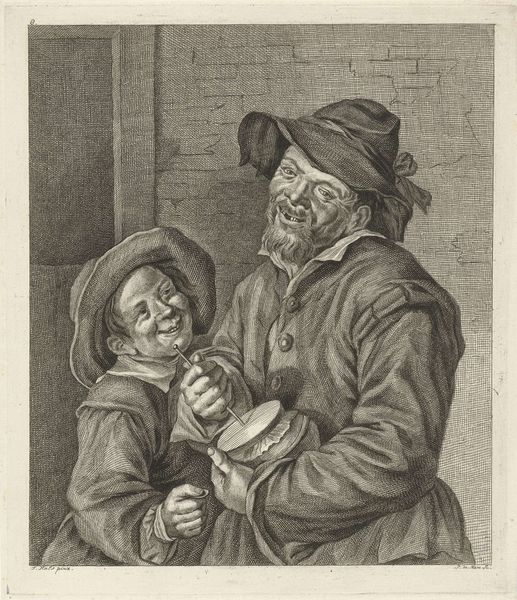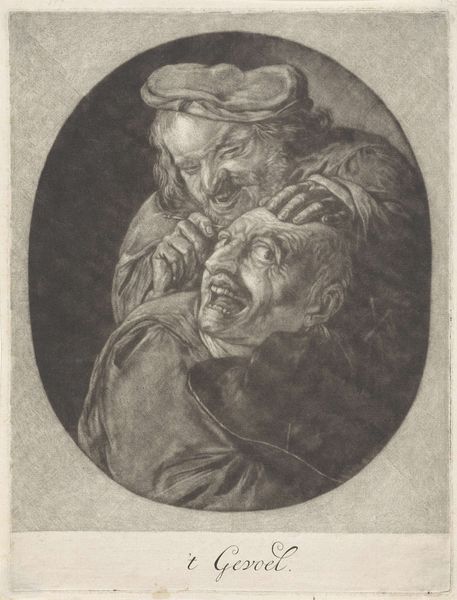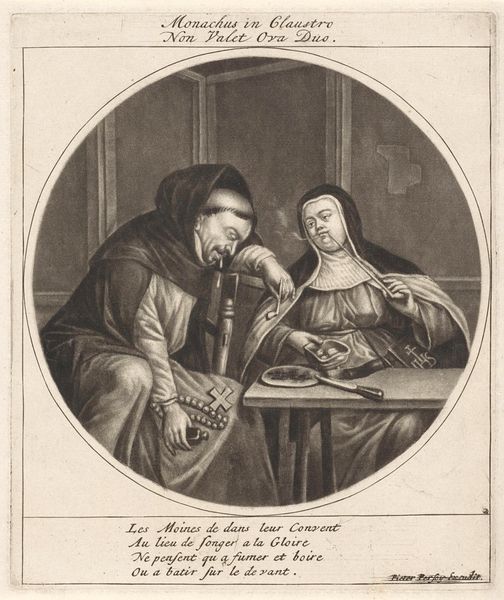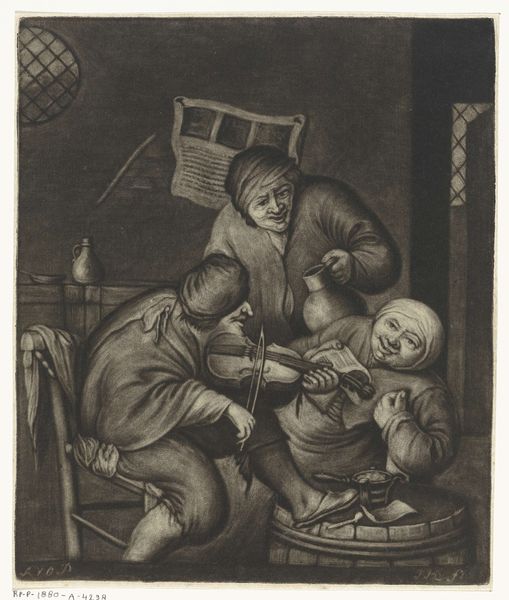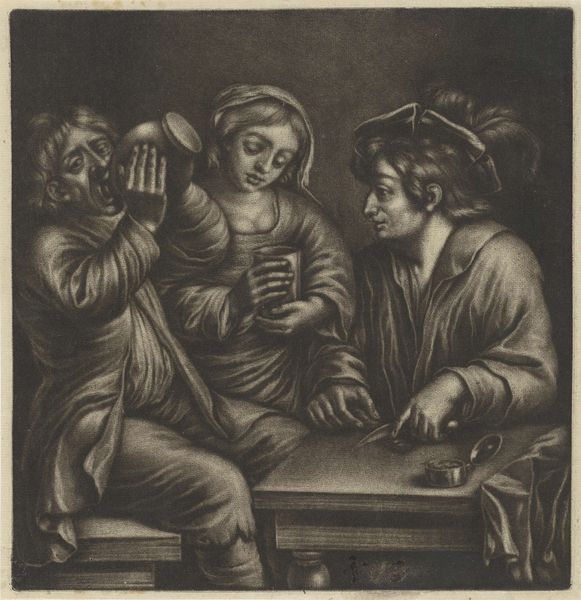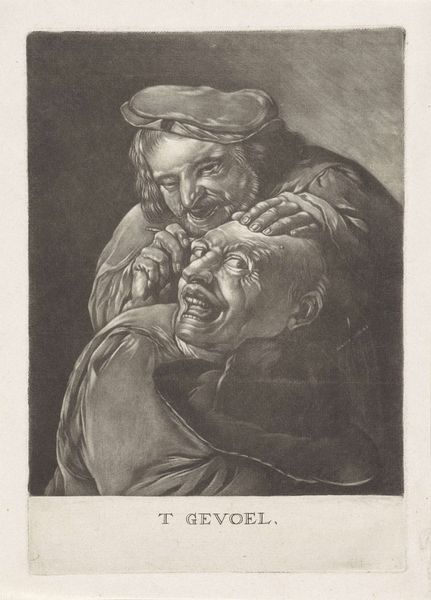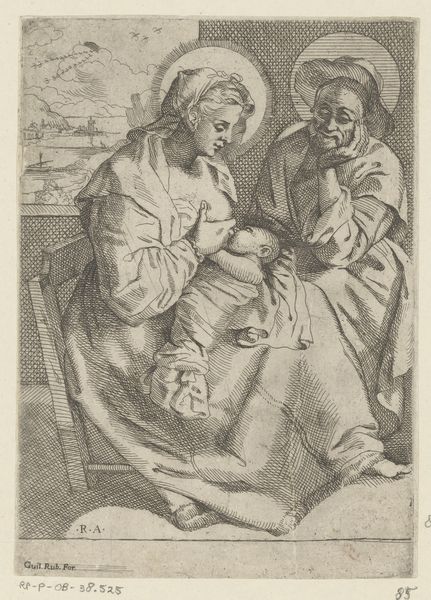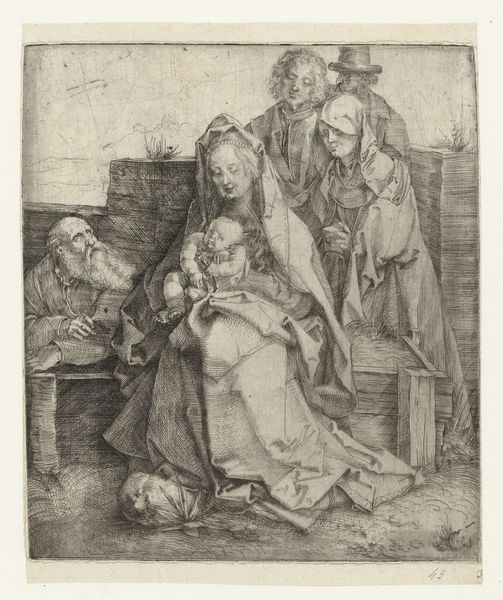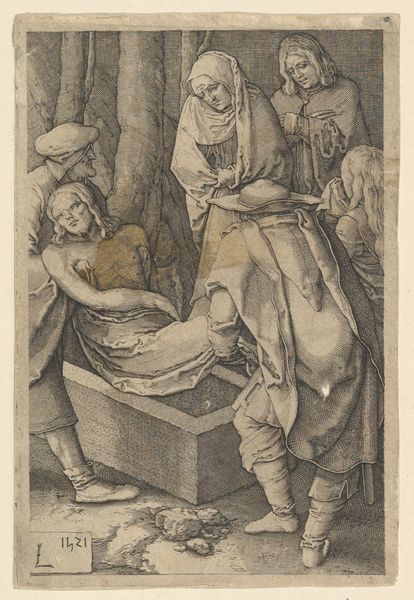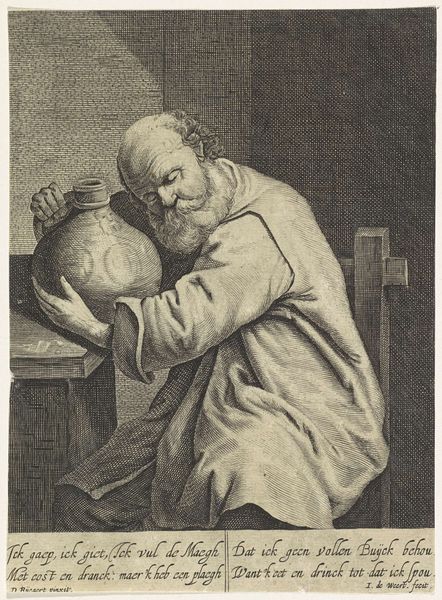
drawing, print, etching
#
drawing
#
baroque
# print
#
etching
#
figuration
#
genre-painting
Dimensions: height 195 mm, width 148 mm
Copyright: Rijks Museum: Open Domain
Curator: Cornelis Dusart created this etching, titled "Biecht," sometime between 1670 and 1704. The Rijksmuseum holds it now. It looks quite somber, wouldn't you say? Editor: I see a carefully constructed image. Note how the round frame forces your attention to the textures: the rough fabric of the monk's habit, the delicate lace of the woman's cap. This print speaks of skilled labor, both artistic and domestic. Curator: Yes, those textures definitely contribute to the visual weight. The central motif seems to be the rosary, prominently displayed against her dark dress. The woman is hunched, hands clasped, whispering, one imagines, into the ear of the attending friar, her eyes downcast and a deeply felt emotion hangs heavy over the pair of them. Editor: It's interesting to consider this image in the context of genre painting, which was flourishing at the time. Dusart captures a scene of everyday life, but filtered through a very particular lens. Etchings like this would have circulated widely. Who were its consumers? And what relationship did they have to these kinds of rituals being depicted here? Curator: Given the history of the image, with religious conflicts playing out across Europe at this time, the ritual of confession gains extra weight. We're shown not just the act but also an intimate and charged relationship of faith, with her spiritual state in precarious balance as represented by clasped hands and downturned face, the balance hangs. It's not a wholly comfortable image. Editor: Indeed, discomfort might have been part of its appeal! These visual devices and compositions speak to social boundaries, power dynamics, what was tolerated in plain sight by one set of viewers versus another. The artist cleverly exploits the symbolic load in this common confessional scene to explore contemporary questions of spiritual expression. What appears commonplace hides layered questions concerning religion and society at that time. Curator: Agreed. Thank you. I think I’ve got a better feel for that tension between outward display and inward reflection this artwork contains. Editor: An intriguing perspective! Thanks, it has broadened my appreciation of the social tensions reflected through its crafting.
Comments
No comments
Be the first to comment and join the conversation on the ultimate creative platform.
